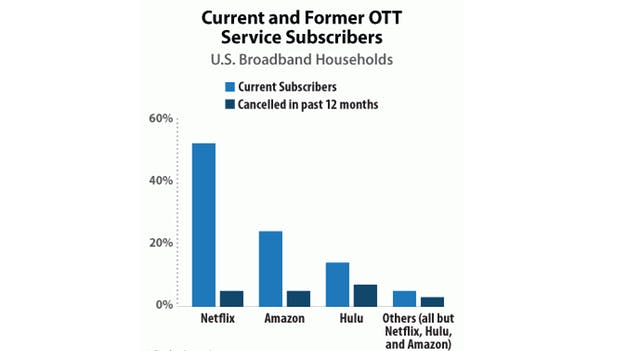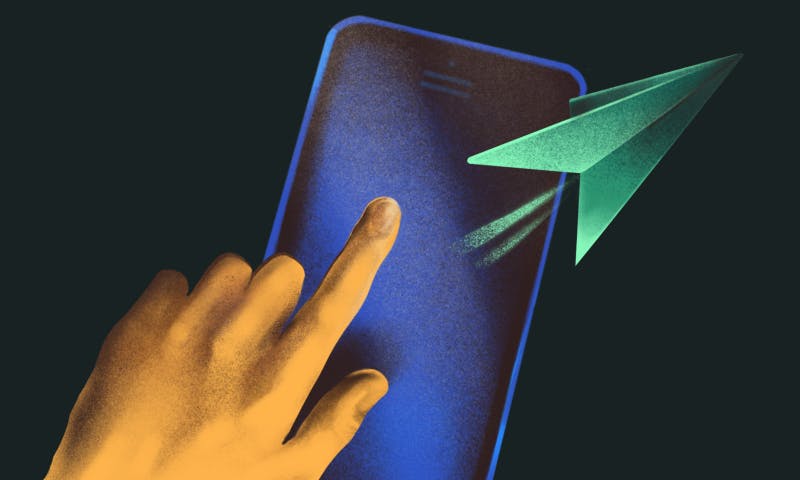Every single founder has had nightmares about high user churn. Whether a company sells to individuals or businesses, a leaky customer base drains your revenue and makes growth nearly impossible.
Yet, there isn't one universal churn band-aid. The best way for any company to deal with churn depends on what they're selling, and who they're selling to. This is clearly illustrated by the differences in the ways that B2C and B2B companies deal with churn—they sell to different customers, so they create different retention strategies that are all about catering to their customers' specific needs.
A successful company — B2C or B2B — creates a strong retention strategy by finding the best way to give customers what they want. Let's look at the different churn challenges that B2C and B2B companies face, and how the best retention strategies are directly shaped by the unique needs of their markets. We'll show that your SaaS company strengthens retention by addressing the challenges of specific customers head-on.
Churn negatively affects both B2B and B2C customers
When customers leave, that's bad news for any business. On a high level, customer churn indicates that something is not working in the way you're doing business. It means that customers—both individuals and businesses—aren't getting what they wanted.
The effects of churn are disastrous: in addition to the immediate loss of revenue from customers who are no longer active and paying, there's a lost opportunity to grow that account over time. High user churn means your company loses current revenue and sacrifices future revenue expansion.
The specific problems that lead to churn are different depending on industry. B2B and B2C companies see different churn rates, on average, because of the different types of customers that they serve and retain. A 2016 Zuora study cites the average churn rate is around 24% for B2B companies, and around 31% for B2C companies. This number is a lot lower for SaaS companies: Pacific Crest's 2014 survey found that the median customer churn for SaaS companies is 8%.
The disparity in churn rate for B2B and B2C companies is due to the differences in the customers and the markets that these companies serve:
- Digital B2C companies (including media companies) largely serve individual consumers who churn when they find a better product, when they lose interest, or when they can no longer pay. There is a large individual consumer market with a lot of competition from other companies.
- B2B companies help other businesses solve problems, which means lapsed interest isn't a strong churn factor. Many B2B companies may also operate in small niche markets where competition isn't as high.
Let's look at how companies in each sector—B2C and B2B—deal with the specific problems that they face in retaining customers. We'll also highlight B2C and B2B companies with stellar retention rates and explore how they analyze retention. You can learn from their strategies to create a retention plan that works best for your company.
B2C Retention: You need to connect with individuals
B2C markets are typically larger than B2B markets, so companies selling to individuals may feel that they have more market to move into when customers churn.
But this larger market has more mercurial customers. Team members in a B2B customer's company may be bound into using your product because of their company's contract. But B2C customers are individuals who have more autonomy to come and go as they please.
This means B2C customers are more of a flight risk than B2B customers—but there's also greater opportunity for them to upgrade of their own volition if you connect with them properly.
Specific churn challenges for B2C companies:
The core B2C mistake that leads to churn is failing to connect with the customer, to nurture interest and encourage upkeep on their account:
- Consumer markets are crowded with competition: The Apple App Store—a channel for many B2C products—is expected to grow by 73% from the end of 2016 to 2020. At the same time, 87% of smartphone use less than 10 apps a day. There are increasing products fighting for finite customer attention.
- Many digital consumer products are entertainment-based: When B2C products aim to entertain (rather than filling a workplace need), they are less problem/solution driven. Customers may churn as they lose interest over time.
- Individuals are subject to credit card delinquencies: Churn due to credit card failure, is a totally unnecessary but pervasive source of churn for SaaS companies. If a customer's card fails and they don't update their information, you'll lose that customer. B2C customers are directly affected by the personal finance issues that can cause churn. Fixing delinquent churn is a simple way to reduce your churn rate.
B2C customers require you make your specific value clear and encourage engagement.
B2C company role model with strong retention
The B2C companies with stand-out retention rates understand the challenges of selling to individuals in the consumer market. Netflix has achieved high retention by finding its own way to capture and keep their market's attention.
Netflix makes sure they have great content for users that other companies don't have. The company exists in a crowded consumer video streaming space—yet they have the lowest churn rates in the market. It has diversified itself from competitors with a strong push to create original content that isn't available with any other services. In 2016, they released 600 hours of original content.

As a result, Netflix has a 9% annual churn rate (lower than all competitors) and a customer base of 93.8 million subscribers.
Takeaway: In a competitive space, figure out what customers want and how you can provide that in a unique way. This will keep customers specifically interested in your product and will continue to engage them over time.
B2B Retention: You need to get the whole team onboard
B2B companies that lose customers usually aren't just losing one individual—they're losing an entire team of users.
If this team churned because they didn't see your B2B product's value or had trouble successfully using the product in their workflow, they may be unlikely to recommend your company and even spread negative feedback. In a small or particularly competitive market, this can be fatal.
On the other hand, by retaining B2B customers and providing and excellent product and customer experience, you create an entire team of evangelists. In order to do this, first understand what challenges companies face in retaining B2B customers.
Specific churn challenges for B2B companies
When your company is catering to other businesses, it's important to be aware that your tool is helping other people do their jobs better. This dynamic is the source of many difficulties that specifically plague the retention efforts of B2B companies:
- Employee turnover at your company affects your relationship: Many B2B customers form relationships with specific point people at your company—so when these employees leave, it can undermine their customer loyalty. Retaining talent is important for customer retention and building long lasting relationships. Companies place a lot of importance on employee retention and practice different strategies to keep their employees happy and productive.
- Large customers require high-touch customer service: As your company grows and starts catering to larger businesses, you'll need higher-touch customer service in order to cater to more complex needs. If your company isn't ready to fill out dedicated sales and customer service teams, it may be difficult to retain larger and needier customers.
- Customers' businesses may fail: Customer business failure is especially a risk if many of your customers are small businesses or startups. You can try your best to make your customers successful by providing a great product, but some factors are beyond your control.
Failing to understand the unique challenges of business-to-business interactions means jeopardizing the success of your customers and the success of your company.
B2B company role models with strong retention
B2B companies with stellar user retention take advantage of the benefits of selling to businesses. New Relic does this by monetizing increased usage of their product as their customers' own businesses grow and succeed. This has helped them achieve net negative churn.
As B2B customers mature, they'll likely need more of your services. New Relic creates opportunities for customers to store more data and upgrade to services that growing companies need. These customers become more and more invested in New Relic as it becomes more engrained in their workflows, which makes them less likely to churn.
This worked for them: At the time of New Relic's S-1, they were expanding existing customers' plans 14% each year on average.

[Source]
New Relic was one of the first B2B SaaS companies to grow by landing and expanding. By growing current customers' accounts, they were able to provide more value to customers and ensure that they would stick around.
Takeaway: One of the best ways to retain business customers is to increase their usage, so that your product is increasingly essential to their workflows. Look to cross-sell and up-sell existing customers to take advantage of how businesses use your product.
Understand what your customers want
The root cause of churn is when customers don't get what they want. B2C and B2B customers may need or want different things from your product—but no matter who your customer is, you have to find the best way to deliver value.
Successful B2C retention strategies look for ways to make the product valuable to the customer even in light of a crowded sector and customers' fleeting attention. Strong B2B user retention relies on making sure that your product and your company helps your customer's business win. In any case, you have to keep in mind how the customer will actually be using your product. A customer's success with your product will motivate them to stay.
Both Netflix and New Relic understand what makes retention so difficult for their particular market and product and address those concerns directly. Whether you're selling to B2B or B2C customers, you can create the strongest retention strategy by shaping it around what you're selling and who you're selling to.
Your business can overcome its own churn challenges
Your company will face its own host of unique churn challenges—but companies in any industry can begin fighting churn by implementing these baseline ideas:
- Get feedback early and often with a Net Promoter Score survey
- Adjust your pricing along a value metric so that it allows for natural cross-selling and up-selling
- Offer annual plans as well as monthly plans so you have more opportunity to connect with the customer and the customer has less opportunity to churn
Successful companies understand the value of their current customers and take attrition and churn prediction seriously. In order to save yourself both short-term revenue and long-term growth opportunity, start addressing your churn right away.




